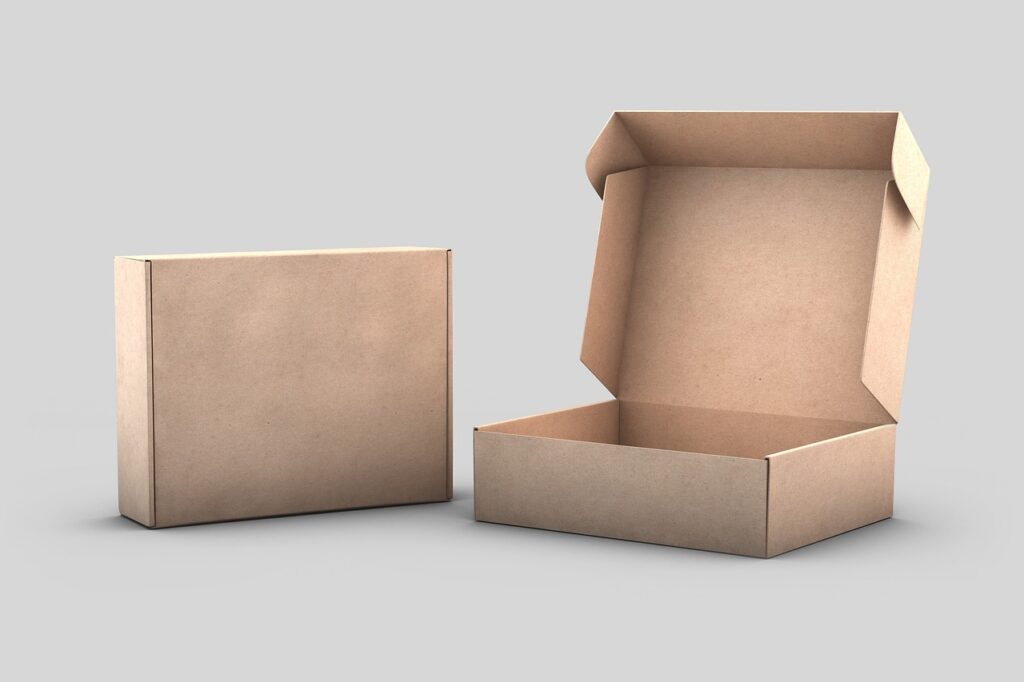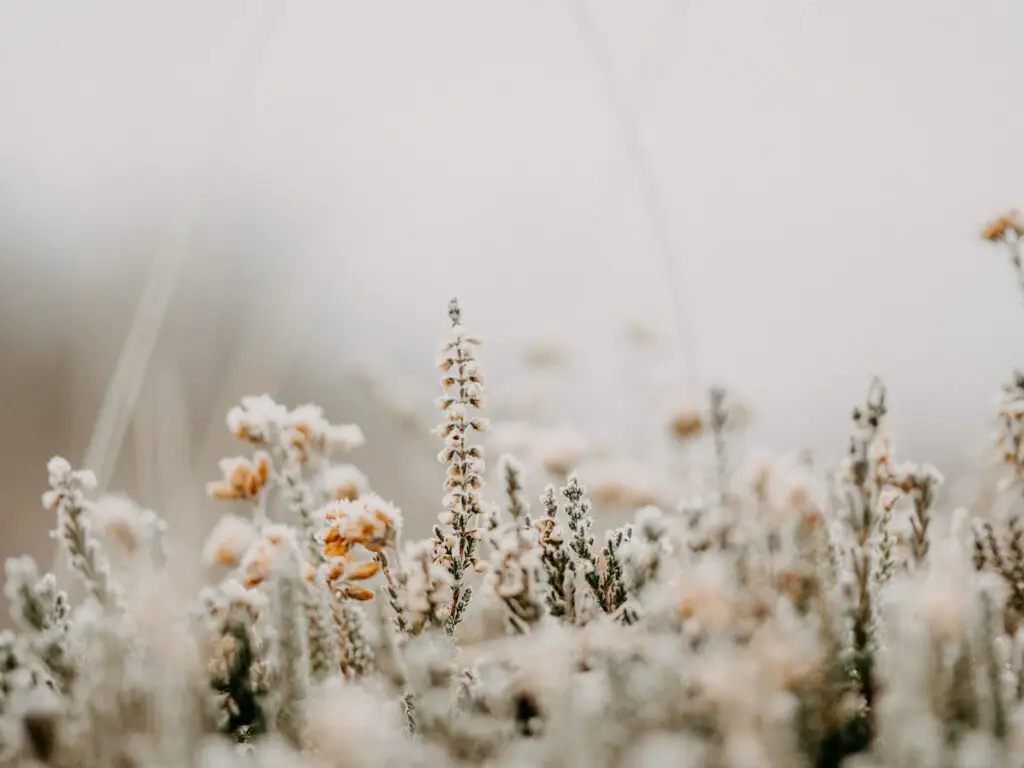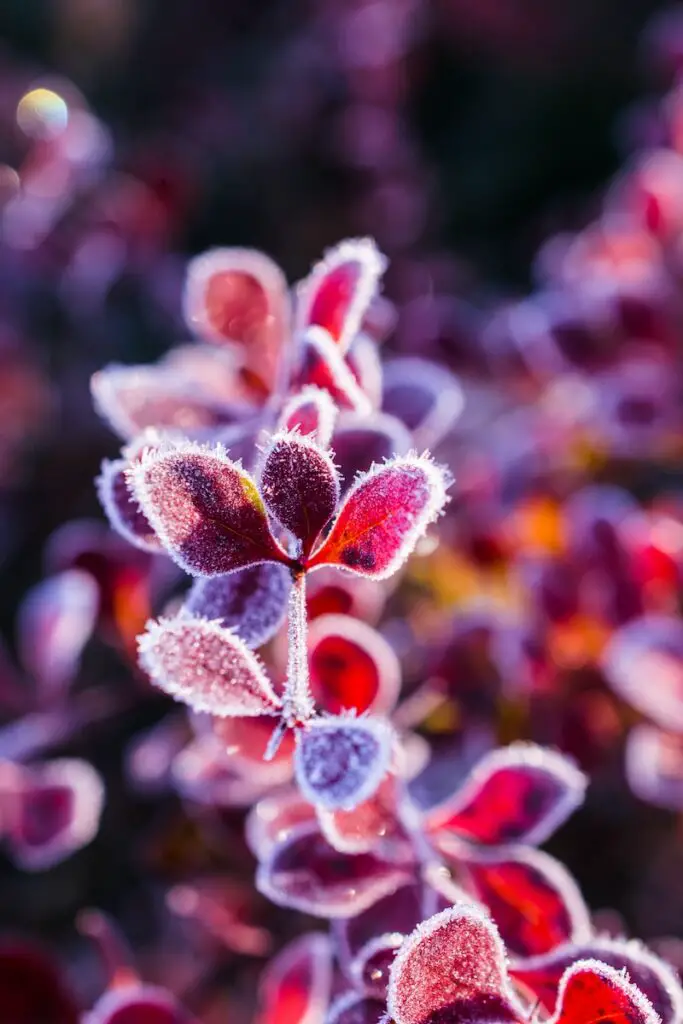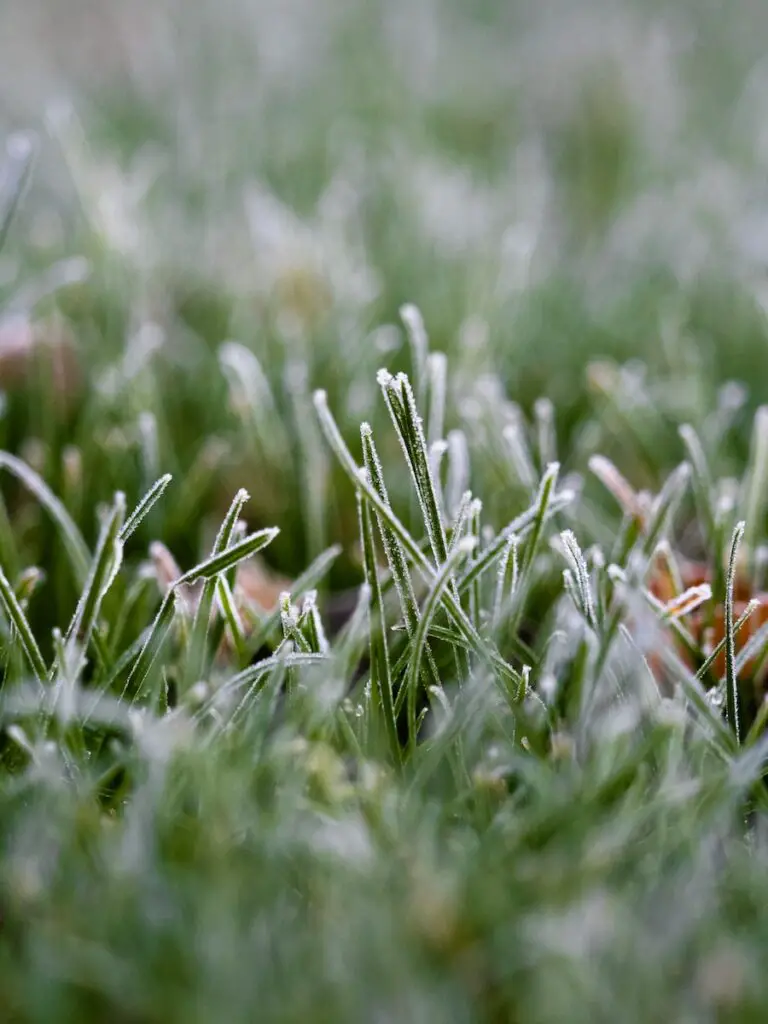
Cardboard boxes are a common household item that can be repurposed for a variety of uses. One such use is protecting plants from frost. Frost can damage or even kill plants by freezing the water inside their cells, causing them to rupture. This is especially true for delicate plants and those that are not native to cold climates.
The idea of using cardboard boxes to protect plants from frost is simple: cover the plant with the box to create a microclimate that will keep the plant warmer. The cardboard box traps heat and prevents the cold air from directly touching the plant. However, the effectiveness of this method depends on several factors, including the severity of the frost, the size of the box, and the type of plant being protected.
Despite the simplicity of the method, there are several tips and tricks to keep in mind when using cardboard boxes to protect plants from frost. For example, it is important to choose a box that is large enough to cover the entire plant without crushing it. Additionally, the box should be secured in place to prevent it from blowing away in the wind. With the right precautions, using cardboard boxes to protect plants from frost can be an effective and affordable solution for gardeners.
Table of Contents
Understanding Frost and Its Impact on Plants

Frost is a common phenomenon that occurs when the temperature drops below freezing point, causing water vapor in the air to freeze and form ice crystals. When frost occurs, it can have a significant impact on plants and their growth.
Frost damage occurs when ice crystals form on the plant’s surface, causing damage to the plant cells. The severity of frost damage depends on the temperature and duration of exposure to freezing temperatures. Light frost, which occurs when temperatures drop to just below freezing, can cause damage to the plant’s cell walls, leading to wilting or browning of leaves. Hard frost, which occurs when temperatures drop significantly below freezing, can cause more severe damage, such as killing the plant or damaging the roots.
Late frost, which occurs after the plant has started to grow, can be particularly damaging as the new growth is more vulnerable to frost damage. Additionally, plants that are not fully hardened off, or acclimated to cold temperatures, are more susceptible to frost damage.
Plant cells are made up of water, which expands when it freezes. This expansion can cause the cell walls to rupture, leading to damage or death of the plant. Additionally, frost can cause dehydration of the plant, as the frozen water in the cells cannot be used by the plant.
In summary, frost can have a significant impact on plants and their growth, causing damage to the plant cells and potentially killing the plant. It is important to understand the impact of frost on plants and take appropriate measures to protect them from freezing temperatures, such as using cardboard boxes or other protective coverings.
Types of Plants and Their Frost Sensitivity

Different types of plants have varying degrees of sensitivity to frost. Some plants are more delicate and require extra protection during cold weather, while others are hardier and can withstand freezing temperatures. Here is a brief overview of some common types of plants and their frost sensitivity:
- Potted plants: Plants grown in containers are generally more vulnerable to frost than those grown in the ground. This is because the roots are exposed to colder temperatures, which can damage or kill the plant. It is important to provide extra insulation for potted plants during cold weather.
- Tender plants: These are plants that cannot tolerate frost at all. They are usually tropical or subtropical plants that are not adapted to cold climates. Examples include citrus trees, succulents, and many ornamental plants.
- Sensitive plants: These plants are not as delicate as tender plants, but they still require protection from frost. They may be damaged by temperatures below freezing, but can usually recover if the damage is not too severe. Examples include strawberries, peppers, and tomatoes.
- Cold-hardy plants: These plants are adapted to cold climates and can tolerate freezing temperatures. They may even require a period of cold weather in order to thrive. Examples include broccoli, cabbage, kale, and many winter plants.
- Fruit trees: Fruit trees have varying degrees of frost sensitivity depending on the type of fruit and the stage of growth. Young trees are more vulnerable than mature trees, and flowering trees are more vulnerable than those that have already fruited.
- Root vegetables and tubers: These plants are generally less sensitive to frost because their edible parts are underground and protected from the cold. Examples include parsnips, radishes, and melons.
Overall, it is important to consider the frost sensitivity of your plants when choosing how to protect them during cold weather. Providing extra insulation, such as covering plants with cardboard boxes, can help to prevent damage and ensure healthy growth in the spring.
Using Cardboard Boxes as Protection

Cardboard boxes can be an effective way to protect plants from frost. They offer insulation and can help to trap heat, keeping the plants warm and safe. Here are some tips for using cardboard boxes to protect your plants:
- Choose the right size box: The box should be large enough to cover the entire plant, but not so large that it is difficult to handle. It should also be tall enough to accommodate any stakes or other supports that the plant may need.
- Cut holes for ventilation: While the box will help to trap heat, it is important to provide some ventilation to prevent moisture buildup. Cut a few small holes in the top of the box to allow for air circulation.
- Secure the box: Use stakes or other supports to keep the box in place. You may also want to weigh down the bottom of the box with rocks or bricks to prevent it from blowing away.
- Remove the box during the day: Once the sun comes out, remove the box to allow the plant to get some sunlight and fresh air. Be sure to replace the box before nightfall to protect the plant from any further frost.
Overall, cardboard boxes can be a cheap and easy way to protect your plants from frost. Just be sure to choose the right size box, provide ventilation, and secure it in place.
Other Materials for Frost Protection

Aside from cardboard boxes, there are several other materials that can be used to protect plants from frost. Each material has its own advantages and disadvantages, and choosing the right one will depend on the specific needs of the plants and the climate.
Plastic Sheets
Plastic sheets are a popular choice for frost protection because they are affordable and easy to use. They can be draped over plants or secured to stakes to create a makeshift greenhouse. However, plastic sheets can also trap moisture, which can lead to fungal growth or rot.
Straw
Straw is another option for frost protection. It can be spread around the base of plants to insulate the roots and prevent freezing. However, straw can also attract rodents and other pests.
Blankets and Burlap
Blankets and burlap can be used to cover plants and create a barrier against frost. They are effective at trapping heat and preventing moisture buildup. However, they can also be heavy and difficult to work with.
Mulch
Mulch can be used to insulate the soil and protect the roots of plants. It can also help retain moisture and prevent soil erosion. However, it may not be effective at protecting the above-ground parts of the plant.
Fabric and Bed Sheets
Fabric and bed sheets can be used to cover plants and protect them from frost. They are lightweight and easy to work with, but may not provide as much insulation as other materials.
Newspaper and Bubble Wrap
Newspaper and bubble wrap can be used to insulate plants and protect them from frost. They are affordable and easy to find, but may not be as effective as other materials.
Old Blankets and Clear Plastic
Old blankets and clear plastic can also be used to protect plants from frost. Old blankets are effective at trapping heat, while clear plastic can create a makeshift greenhouse. However, both materials can trap moisture and lead to fungal growth or rot.
Row Covers
Row covers are lightweight fabrics that can be draped over plants to protect them from frost. They are effective at trapping heat and preventing moisture buildup. However, they may not provide as much insulation as other materials and can be expensive.
Overall, there are many materials that can be used to protect plants from frost. Choosing the right one will depend on the specific needs of the plants and the climate.
Effective Techniques for Frost Protection

When it comes to protecting plants from frost, there are several effective techniques that can be used. Whether you are dealing with spring or fall frosts, indoors or outdoors, in containers or garden beds, there are ways to protect your plants and ensure they survive the cold temperatures.
Watering
Watering your plants before a frost can help protect them from the cold. The water will absorb the heat during the day and release it at night, creating a layer of warmth around the plants. However, it is important not to overwater, as excess moisture can lead to other problems such as mold and rot.
Containers and Paper
Plants in containers can be moved indoors or covered with blankets or cardboard boxes to protect them from frost. Cardboard boxes can be an effective barrier against the cold, but it is important to ensure that they are not touching the plants directly, as this can cause damage. Paper can also be used to cover plants, but it is important to use a breathable material to prevent moisture buildup.
Garden Beds
In garden beds, mulch can be used to insulate the soil and protect the roots of plants from frost. Rocks can also be used to absorb heat during the day and release it at night, creating a layer of warmth around the plants.
Mini Greenhouse and Cloche
A mini greenhouse or cloche can be used to protect plants from frost. These structures trap heat and create a warm environment for the plants. It is important to ensure that there is adequate ventilation to prevent moisture buildup.
Buds, Bloom, Blossoms, and Harvest
When plants are in the bud, bloom, or blossom stage, they are more vulnerable to frost damage. It is important to protect these stages of growth to ensure a successful harvest. Harvesting fruits and vegetables before a frost can also prevent damage.
Textile and Moisture
Textile materials such as blankets or burlap can be used to cover plants and protect them from frost. It is important to ensure that the material is not touching the plants directly and that there is adequate ventilation to prevent moisture buildup. Excess moisture can lead to other problems such as mold and rot.
Overall, there are several effective techniques for protecting plants from frost. By taking the necessary precautions, gardeners can ensure that their plants survive the cold temperatures and continue to thrive.
Frost Protection in Different Garden Settings
Frost can be a significant challenge for gardeners, especially during the winter months. It can damage or kill plants, making it difficult to maintain a thriving garden. However, there are several ways to protect your plants from frost, including using cardboard boxes.
Garden Beds
Garden beds are often the most vulnerable to frost damage. However, there are several ways to protect them. One option is to cover the plants with a thick layer of mulch or organic material, such as compost. This will help insulate the plants and protect them from the cold.
Another option is to use cardboard boxes to cover the plants. Simply place the boxes over the plants and secure them in place with rocks or other heavy objects. This will help trap heat and protect the plants from frost damage.
Containers
Containers can also be vulnerable to frost damage. However, there are several ways to protect them. One option is to move the containers to a sheltered location, such as a garage or shed. This will help protect them from the cold and reduce the risk of frost damage.
Another option is to use cardboard boxes to cover the containers. Simply place the boxes over the containers and secure them in place with rocks or other heavy objects. This will help trap heat and protect the plants from frost damage.
Greenhouses and Cold Frames
Greenhouses and cold frames are designed to protect plants from the cold. However, they can still be vulnerable to frost damage if they are not properly insulated. One option is to use cardboard boxes to insulate the greenhouse or cold frame. Simply place the boxes around the perimeter of the structure and secure them in place with rocks or other heavy objects. This will help trap heat and protect the plants from frost damage.
Effort
Protecting your plants from frost does require some effort. However, the effort is well worth it if it means protecting your plants from damage or death. Using cardboard boxes to protect your plants from frost is a simple and effective way to ensure they stay healthy and thrive.
In conclusion, using cardboard boxes to protect your plants from frost can be an effective way to maintain a healthy garden. Whether you have a winter garden, vegetables, or other plants, there are several ways to use cardboard boxes to protect them from frost damage. By taking the time to protect your plants, you can ensure they stay healthy and thrive year-round.
Preventing Damage from Other Environmental Factors
In addition to protecting plants from frost, it is important to prevent damage from other environmental factors such as harsh weather, pests, disease, and improper watering. These factors can weaken plants and make them more susceptible to frost damage.
Harsh weather, such as strong winds and heavy rain, can damage plants by breaking branches or uprooting them from the ground. To prevent this, it is important to stake plants and provide support for them during periods of harsh weather.
Pests and disease can also weaken plants and make them more vulnerable to frost damage. To prevent this, it is important to regularly inspect plants for signs of pest infestation or disease and take appropriate measures to control them.
Proper watering is also essential for preventing damage from environmental factors. Overwatering can lead to root rot, which weakens plants and makes them more susceptible to frost damage. Underwatering can also weaken plants and make them more vulnerable to frost damage.
In summary, preventing damage from other environmental factors is essential for protecting plants from frost damage. By taking appropriate measures to prevent damage from harsh weather, pests, disease, and improper watering, plants can remain healthy and strong, even during periods of extreme weather.